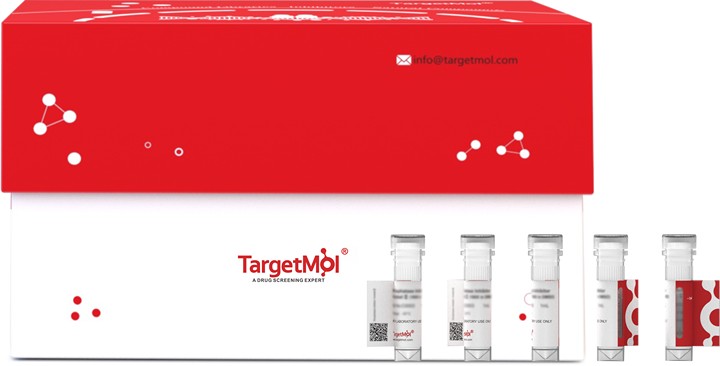Shopping Cart
Remove All Your shopping cart is currently empty
Your shopping cart is currently empty
The three butyrophilin BTN3A molecules, BTN3A1, BTN3A2, and BTN3A3, are members of the B7/butyrophilin-like group of Ig superfamily receptors, which modulate the function of T cells. BTN3A1 controls activation of human Vγ9/Vδ2 T cells by direct or indirect presentation of self and nonself phosphoantigens (pAg). BTN3A1 Protein, Cynomolgus, Recombinant (His & Avi) is expressed in HEK293 mammalian cells with C-His-Avi tag. The predicted molecular weight is 26.5 kDa and the accession number is A0A330KWZ1.

| Pack Size | Price | USA Warehouse | Global Warehouse | Quantity |
|---|---|---|---|---|
| 5 μg | $58 | 7-10 days | 7-10 days | |
| 10 μg | $92 | 7-10 days | 7-10 days | |
| 20 μg | $148 | 7-10 days | 7-10 days | |
| 50 μg | $289 | 7-10 days | 7-10 days | |
| 100 μg | $487 | 7-10 days | 7-10 days | |
| 200 μg | $883 | 7-10 days | 7-10 days | |
| 500 μg | $1,950 | 7-10 days | 7-10 days |
| Biological Activity | Immobilized Cynomolgus BTN3A1, His Tag at 0.5μg/ml (100μl/Well) on the plate. Dose response curve for Anti-BTN3A1 Antibody, hFc Tag with the EC50 of 10.9ng/ml determined by ELISA. |
| Description | The three butyrophilin BTN3A molecules, BTN3A1, BTN3A2, and BTN3A3, are members of the B7/butyrophilin-like group of Ig superfamily receptors, which modulate the function of T cells. BTN3A1 controls activation of human Vγ9/Vδ2 T cells by direct or indirect presentation of self and nonself phosphoantigens (pAg). BTN3A1 Protein, Cynomolgus, Recombinant (His & Avi) is expressed in HEK293 mammalian cells with C-His-Avi tag. The predicted molecular weight is 26.5 kDa and the accession number is A0A330KWZ1. |
| Species | Cynomolgus |
| Expression System | HEK293 Cells |
| Tag | C-His-Avi |
| Accession Number | A0A330KWZ1 |
| Synonyms | CD277,BTN3A1,BTN3.1,BTF5,BT3.1 |
| Construction | Gln1-Trp219 |
| Protein Purity | > 95% as determined by Tris-Bis PAGE; > 95% as determined by HPLC |
| Molecular Weight | 26.5 kDa (predicted). Due to glycosylation, the protein migrates to 30-35 kDa based on Tris-Bis PAGE result. |
| Endotoxin | < 1 EU/μg by the LAL method. |
| Formulation | Lyophilized from a solution filtered through a 0.22 μm filter, containing PBS (pH 7.4). Typically, 8% trehalose is incorporated as a protective agent before lyophilization. |
| Reconstitution | Reconstitute the lyophilized protein in distilled water. The product concentration should not be less than 100 μg/ml. Before opening, centrifuge the tube to collect powder at the bottom. After adding the reconstitution buffer, avoid vortexing or pipetting for mixing. |
| Stability & Storage | It is recommended to store recombinant proteins at -20°C to -80°C for future use. Lyophilized powders can be stably stored for over 12 months, while liquid products can be stored for 6-12 months at -80°C. For reconstituted protein solutions, the solution can be stored at -20°C to -80°C for at least 3 months. Please avoid multiple freeze-thaw cycles and store products in aliquots. |
| Shipping | In general, Lyophilized powders are shipping with blue ice. |
| Research Background | The three butyrophilin BTN3A molecules, BTN3A1, BTN3A2, and BTN3A3, are members of the B7/butyrophilin-like group of Ig superfamily receptors, which modulate the function of T cells. BTN3A1 controls activation of human Vγ9/Vδ2 T cells by direct or indirect presentation of self and nonself phosphoantigens (pAg). |
| Size | Quantity | Unit Price | Amount | Operation |
|---|

Copyright © 2015-2025 TargetMol Chemicals Inc. All Rights Reserved.